Monitored Dump Valves - SAFEAIR
The issue of safety in the workplace is of absolute importance and over the years the standard setters have developed a series of continuously evolving
standards, the focal point of which remains the Machinery Directive.
In order to ensure conformity of the machine, the manufacturer must verify that it meets the safety requirements listed in the directive and guarantee
compliance with the harmonised standards published in the European Union’s Official Journal and relating to the product in question.
There are three types of safety standard for machinery:
• type A, which establish general principles applying to the design of all machinery
• type B, which deal with one or more safety aspects for a wide range of machinery
• type C, which deal in detail with the specific category of machines
Type A standards include EN ISO 12100, which cover the basic concepts and general principles for the design of safe machinery, and EN ISO
14121, which describe a hazard identification and risk assessment method.
Type B standards include EN ISO 13840, which provides the tools for designing parts of control systems linked to machine safety, mainly the control
systems, which are made of components featuring various kinds of technology to reduce risks associated with use of the machine, and IEC 62061,
which only refers to systems using electrical and electronic technologies.
One of the main affinities between EN ISO 13849 and IEC 62061 is that the former establishes as the desired safety parameter an index called PL
(performance level) and the latter identifies a similar parameter called SIL (safety integrity level). Both indices represent the machine’s reliability in
terms of the probability of a dangerous failure.
EN 982 and EN 983 are also type B standards and both deal with safety, but unlike the previous standards they concern components (hydraulic and
pneumatic respectively) rather than controlled devices.
When type C standards exist for a particular machine, the manufacturer can adopt them directly to achieve the presumption of compliance with the
Machinery Directive; if no type C standard exists, it is still necessary to implement a risk-reduction strategy like the one described in harmonised
standards type A and B.
Since revision 98/37/EC, the Machinery Directive has dealt not only with machines but also with safety components, namely components made and
sold specifically to achieve a safety function and the breakage or malfunction of which jeopardizes personal health and safety.
EN ISO 13849
When type C standards do not exist for a particular machine, the manufacturer can adopt the risk-reduction strategy indicated in EN ISO 13849.
This standard is divided into two parts: the first part sets out the general principles and the method to follow; the second part is dedicated to validation
of the results.
According to the first part of the standard, a machine designer can reduce the risk by designing special safety-related parts of control systems
(SRP/CS) that perform one or more safety functions, such as emergency stops, prevention of unexpected start-up, isolation and energy dissipation.
We quote the example of a function comprising three SRP/CSs: a safety barrier (input – sensor), a PLC (processing - logic) and a valve (output -
actuator). In the event of intrusion, the barrier relays a signal to the PLC, which activates the valve, the job of which is to relieve a section of the
pressurized pneumatic circuit, thereby providing isolation and energy dissipation.
For further details, please click on Here
For further details on the CETOP standards, please click Here
For Data Sheets on the SAFEAIR Series, please click Here
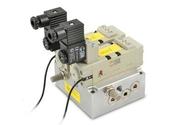
7058021410 - Metal Work SAFE AIR - ATEX Monitored Dump Valve - Double Valve ISO 2 servopil 2.5m 5/2 Monostable Valve
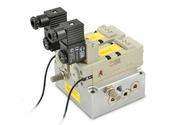
7058121110 - Metal Work SAFE AIR - ATEX Monitored Dump Valve - Double Valve ISO 2 0.3m 5/2 Monostable Valve
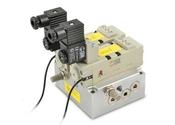
7058121410 - Metal Work SAFE AIR - ATEX Monitored Dump Valve - Double Valve ISO 2 servopil 0.3m 5/2 Monostable Valve
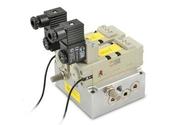
7058221110 - Metal Work SAFE AIR - ATEX Monitored Dump Valve - Double Valve ISO 2 2m 5/2 Monostable Valve
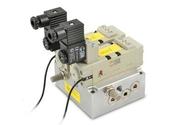
7058221410 - Metal Work SAFE AIR - ATEX Monitored Dump Valve - Double Valve ISO 2 servopil 2m 5/2 Monostable Valve
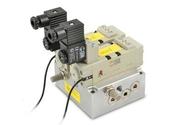
7059021110 - Metal Work SAFE AIR - ATEX Monitored Dump Valve - Double Valve ISO 3 2.5m 5/2 Monostable Valve
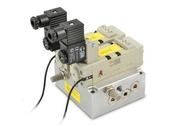
7059021410 - Metal Work SAFE AIR - ATEX Monitored Dump Valve - Double Valve ISO 3 servopil 2.5m 5/2 Monostable Valve
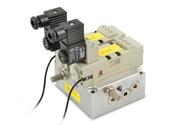
7059221110 - Metal Work SAFE AIR - ATEX Monitored Dump Valve - Double Valve ISO 3 2m 5/2 Monostable Valve
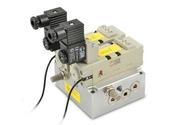
7059221410 - Metal Work SAFE AIR - ATEX Monitored Dump Valve - Double Valve ISO 3 servopil 2m 5/2 Monostable Valve
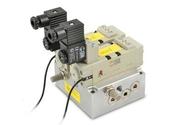
7059121110 - Metal Work SAFE AIR - ATEX Monitored Dump Valve - Double Valve ISO 3 0.3m 5/2 Monostable Valve
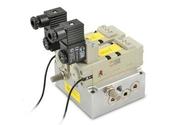
7059121410 - Metal Work SAFE AIR - ATEX Monitored Dump Valve - Double Valve ISO 3 servopil 0.3m 5/2 Monostable Valve
- 1
- 2